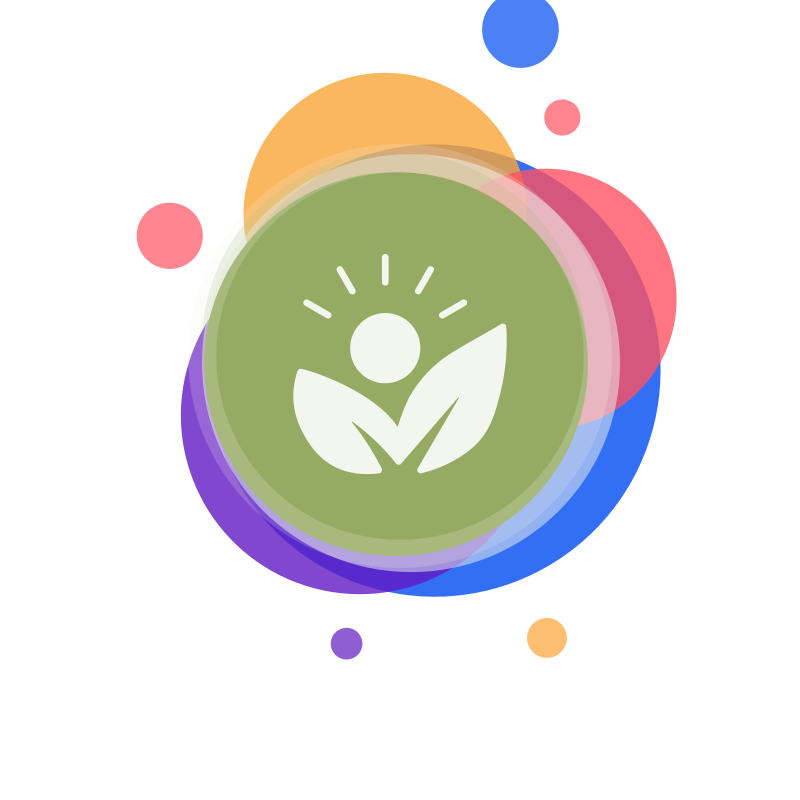Your cart is currently empty!

DEALING WITH STRESS
Dealing With Stress
What is Stress?
According to WHO “stress can be defined as a state of worry or mental tension caused by a difficult situation. Stress is a natural human response that prompts us to address challenges and threats in our lives. Everyone experiences stress to some degree. The way we respond to stress, however, makes a big difference to our overall well-being.”1
I personally think that stress is an uncomfortable experience that we have when we are challenged mentally or/and physically and not able to cope with these demands. That is why not everyone has the same experience to the same demands. These demands can be stressful for some and perfectly fine or even pleasurable for others. The difference stems from our personal ability to adapt, be resilient and resourceful. These are the traits of a person with a growth mindset, who interprets challenges and setbacks as opportunities to grow and develop new skills.
Thus, stress can be a positive experience when is very mild, even a beneficial experience of increasing performance, as opposed to a total traumatic one, or anything in between. Unfortunately, operating under stress has become for many the status quo, where they cannot even recognise as being stressed unless there is a change in the demands, may be positive – like having a nice holiday; or may be negative – like having an illness related to the ongoing state of stress. A change in the status quo helps the person observe and become aware how they operate day to day and what levels of stress they carry with them daily.
This is an important point in dealing with stress, when we become aware of our state of stress and recognise the early signs, rather than trying to tame a long-standing state of stress. The latest will generate a pattern of resistance to any change.
The importance of early recognition of your stress levels
Why is stress so much talked about and such an important topic. During the last two decades, there has been accumulating evidence indicating that severe or prolonged (chronic) stress resulted in increased risk for physical and psychiatric disorders, which is called stress-related disease. Stress is the common risk factor of 75%–90% diseases, including the diseases which cause the most morbidity and mortality2.
Chronic stress increases the risk of heart disease, high blood pressure, inflammation, and other cardiovascular issues. It is called the ‘silent killer’ because can contribute to a lot of conditions, as it affects all systems – musculoskeletal, respiratory, cardiovascular, endocrine, gastrointestinal, nervous, and reproductive3.
Paying attention and becoming aware of the symptoms of stress is going to help us in the long run, and not only by giving us more control over the quality of our life, but also sparing us from unnecessary suffering and possible health dis-eases related to stress later in life.
However, this is easier said than done. Who has the knowledge, time, and desire to self-assess, right? Well, not really, we do not need any kind of psychoanalysis. There are easier ways to read the signals that our bodies and minds give us. Here are a few signs to recognise the stress level is increasing.
Somatic Signs of Stress
- Appetite increase or decrease
- Mild indigestion (with or without bloating and changes in bowl frequency and consistency) that can progress to worse one if stress level increases
- Flares of existing conditions (IBS, skin conditions, nervous bladder symptoms, allergies, anxiety, depression, diabetes, hypertension, arthritis, migraines)
- Increase in irritability and brain fog
- Decrease in memory performance and focus
- Disturbed sleep patterns and/or insomnia
- New symptoms like headaches, eczema, or weight fluctuation, especially water retention
- Other symptoms without any explanation
The body always communicates with us, we just have learned to ignore all these signs and only trying to get the symptoms to go away, not the cause. For instance, we would take a Panadol for a headache rather than take a brake and relax.
Another way is to pay attention to our thoughts. Our mind reacts the same to reality or fiction (think of watching movies and how we react emotionally, even though it is only fiction). So, many times the stress we experience is a response to what we think, the anxiety for the future and scenarios we play in our mind or ruminating over the past and unresolved issues. We react like it happens right then and there. This is how trauma and PTSD works, when a very strong event that affected us emotionally made a very strong connection with our mind and body and created an anchor, that later become the trigger (a song, a sound, an image, some words, a similar scenario, a smell, etc.
Negative thinking and negative self-talk are simple recipes for anxiety and depression (some professionals discuss the modern never-ending anxiety pushed toward extreme can become depression, as a state learned self-helplessness). Anxiety is a response to stress, unless has an organic nature (a diagnosed condition).
Trying to stay ahead and learning the early signs of stress is the key to gaining control over our stress levels. This is a behaviour modification to learn how to listen and understand what our bodies tell us about our stress levels.
How does it all work
Stress is perceived and interpreted by our nervous system. That is why when our nervous system is dulled down (sleeping tablets, alcohol, drugs – legal or not) we don’t stress that much, if at all.
Our nervous system has two main parts:
- SNS – the sympathetic nervous system (knows as the ‘fight and flight’)
- PNS – the parasympathetic nervous system (known as the ‘rest and digest’)
These two branches of our nervous system work in a very nice harmony and cannot both be up or down. When we are stressed, an experience of the SNS, then most of the blood is directed to the circulatory (heart) and respiratory systems (lungs) and to our musculoskeletal muscle preparing us to fight or flee. The blood is directed away from the digestion and elimination. That is why when stress we’re getting indigestion, and our bowel and bladder habits get changed. It is a survival mechanism. When people are under threat, many times they can expel their stomach contents and bowel/bladder, so all the energy goes into self-preservation through fight or flee for survival. It is our primary brain, so called reptilian brain, that acts on deep basic survival instincts.
When we are relaxed, then the blood is directed away from the heart, lungs and muscles, just keeping enough for basic functions with a slower heart rate and respiration rate, and relaxed muscles. The blood is direct to the digestion, repairs, and reproduction of the species. In fact, the more updated version of the ‘fight and flight’ is ‘fight, flight, or freeze’ – with the last one recognised as another way of survival. Similarly, the ‘rest and digest’ is ‘rest, digest and reproduce’. Think in terms of a primitive human, when survival of the species and self-preservation are the most important things.
Well, our instincts of survival are wonderful tools, but we were not designed for the life of the moder human with such influx of demands that places us in a perpetual ‘fight, flight and freeze’. And that is when all gets out of shape, and we succumb to stress. To cope, many just try to do what I was explaining earlier, dull the instincts with alcohol, excessive food, junk food, drugs, sex, medication, gambling, etc.
Therefore, reading the early signs of stress and trying to prevent escalation is best, although this will not be enough many times, or at least not until we get truly good at preventing the escalation. Having a ‘toolbox’ of coping ways to deal with the stress once it gets the better of us is always great. Some of these are short term tools; some are long term habits.
Tools to de-stress at your fingertips
Short term tools to de-stress:
- Breathing techniques
- Deep inhalation into the belly with slow pursued lips exhalation
In addition to the lung benefits you can get from pursed lip breathing, this technique can also lead to overall relaxation. By taking consistent, deep breaths, you can calm the central nervous system, which has a relaxing effect on your entire body. This can help reduce stress and anxiety. Here is a short video with a good guidance: Breathing Exercises To Calm Anxiety | Pursed Lip Breathing (2023) (youtube.com)
- Alternative nostril breathing
This is a technique from yoga breathing (pranayama) called Nadi Shodhan. Here is a link for a few minutes practice guided technique: Alternate Nostril Breathing | Nadi Shodhan Pranayama | Basic Breathing Exercises (youtube.com)
- Meditation
- Body scanning
- Yoga Nidra
- Guided meditation
- ‘Living in the present’ behaviour – can read or listen to “The Power of Now” book
- Changing state of mind through somatic experiences
- Assess how you feel emotionally, your stress level, and body sensations
- Name 3 things you see (with intention and focus) -reassess
- Name 3 colours you see (with focus and intention) – reassess
- Describe or name 3 shapes you see (with focus and intention) – reassess
- Reassess how you feel and your body sensation in comparison to the levels before the practice. If needed repeat practice until feeling better (not the same things, colours shapes; each time find different ones without changing place or position, just an increase in challenge)
- Tai Chi /Yoga
- Singing
- Vagus nerve toning exercises How to Relax Your Body in Seconds (Vagus Nerve Stimulation) Dr. Mandell (youtube.com)
- Making fun in your mind of negative thoughts or criticism
- Listening to relaxing music
- Audible (relaxing stories/music)
- Including joyful activities / being at flow with true self (cooking, gardening, drawing, playing an instrument, whatever brings you joy and allows you to get lost in that moment’s flow)
- Having a break from what you do that will be beneficial to you especially at individual level (positive anchors/triggers)
Long term tools to de-stress:
- Avoid toxic relationships
- Surround yourself with people that support and encourage you
- Surround yourself with people that are how you want to be, role models
- Consider doing more of the things that you love and not only those to survive – have a balance and harmony to your life
- Pay attention to what your body tells you (early stress recognition0
- Build resilience through exposure
- Build resourcefulness through a solution approach to your life
- Change your narrative (change what you tell yourself and how you see yourself):
- focus on observing what is positive in your life,
- have faith in yourself, chase your dreams
- encourage yourself through what you see, hear, and the people you keep company with
- Have a growth mindset = resilience (can be stretched out of your comfort zone without stressing and bounce back easily) + resourcefulness (can find solutions and never give up, always have faith you can do something if you keep trying) + solution focused attitude (every problem has a solution, focus on the solutions and not the problem and try feeling the joy of accomplishing this) + adaptability (go with the flow where is possible, as those that bend will not brake) + be kind to yourself and keep learning new ways to nurture yourself. Know that challenge and setbacks are only opportunities for growth.
Enjoy! It is said that awareness is curative. If you need help, please contact us to guide you to success!
